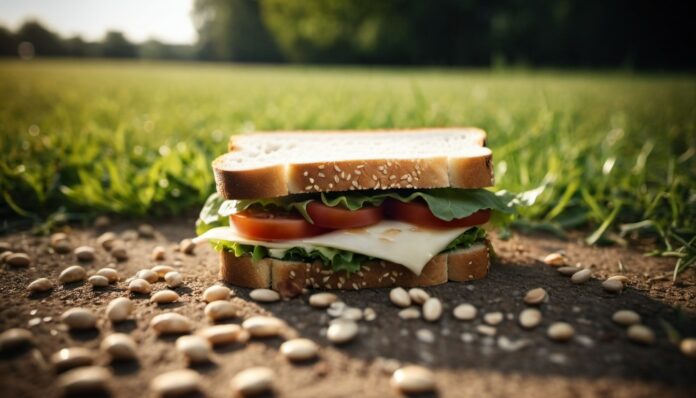Many of us have heard of the five-second rule, that seemingly magical belief that if you pick up dropped food within five seconds, it’s still safe to eat. But is there any truth to this popular notion, or is it just a harmless myth? Let’s dive into the science and reality behind the five-second rule.
The Myth: A Brief Window of Safety
The five-second rule suggests that when food falls on the floor, you have a five-second window to pick it up before it becomes contaminated with harmful bacteria. This rule has been passed down through generations, often invoked to save a favorite snack from going to waste.
The Truth: Bacteria Don’t Wait
Unfortunately, the five-second rule doesn’t hold up under scientific scrutiny. Studies have shown that bacteria can transfer to food almost instantly upon contact with a contaminated surface. The type of surface, the nature of the food, and the presence of moisture all influence how quickly and how much bacteria are transferred, but the idea that bacteria need several seconds to move is a myth.
How Bacteria Transfer Works
 When food contacts a surface, bacteria adhere to it almost immediately. The speed and amount of bacterial transfer depend on several factors:
When food contacts a surface, bacteria adhere to it almost immediately. The speed and amount of bacterial transfer depend on several factors:
- Surface Type: Hard surfaces like tile or wood tend to transfer bacteria more quickly than porous surfaces like carpet.
- Food Type: Moist or sticky foods pick up more bacteria than dry foods.
- Contamination Level: The number of bacteria present on the surface plays a significant role in how much is transferred to the food.
Scientific Studies on the Five-Second Rule
Several studies have investigated the validity of the five-second rule. Researchers at Rutgers University found that bacteria can transfer to food in less than one second. Another study from Aston University in the UK found that the longer food remains on the floor, the more bacteria it accumulates, but significant contamination can still occur almost instantly.
The Risks of Eating Dropped Food
While not all bacteria are harmful, some can cause foodborne illnesses. Common culprits include Salmonella, E. coli, and Listeria, which can lead to symptoms like nausea, vomiting, diarrhea, and more severe health issues. Eating food that has been in contact with contaminated surfaces increases the risk of these infections.
Practical Tips for Food Safety
Although the five-second rule may not be reliable, there are practical steps you can take to minimize the risk of foodborne illness:
- Keep Surfaces Clean: Regularly clean kitchen counters, tables, and other surfaces where food is prepared and eaten.
- Use Cutting Boards Wisely: Avoid cross-contamination by using separate cutting boards for raw meats and other foods.
- Wash Hands Frequently: Always wash your hands before handling food and after touching potentially contaminated surfaces.
- Inspect Dropped Food: If food falls on a visibly clean surface, use your best judgment, but when in doubt, it’s safer to discard it.
The five-second rule is a fun and convenient myth, but it’s not based on scientific reality. Bacteria can transfer to food almost instantly, making it risky to eat food that’s been dropped, even for a few seconds. By understanding the facts and practicing good food hygiene, you can reduce the risk of foodborne illness and keep yourself and your loved ones safe. So next time you drop a tasty treat, remember: it’s better to be safe than sorry.
